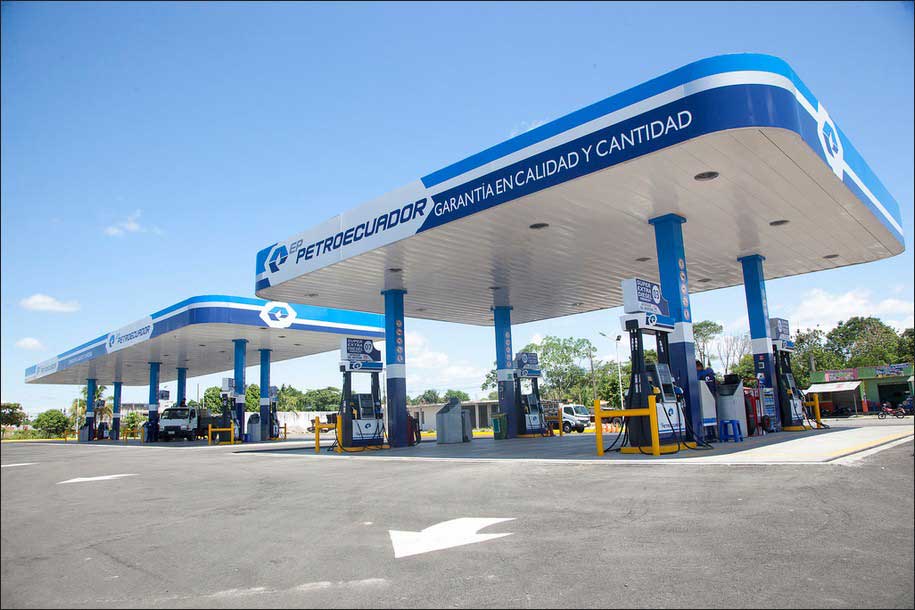Among all gasoline types, Ecopaís, primarily available on Ecuador’s coast and southern regions—including Azuay province—receives the most subsidies from the state.
President Daniel Noboa emphasizes the necessity of directing substantial state expenditures toward subsidies for low-octane gasoline in the automotive sector. This specifically targets 85 octane gasoline, including Extra and Ecopaís. Noboa has stated that subsidies for diesel in the automotive sector and liquefied petroleum gas (LPG) for household use will remain untouched.
“These are low-octane gasoline types with a low consumption rate. Of course, we should phase out the subsidy gradually, targeting groups that no longer require it,” he remarked.
But what would Ecuadorians actually pay if the state withdrew these gasoline subsidies?
The true cost of Extra gasoline is $3.04 per gallon as of May 2024. However, end consumers in Ecuador pay a fixed price of $2.46 per gallon for Extra and Ecopaís, inclusive of a 15% Value Added Tax (VAT) since April 2024.
This means that for every gallon of Extra sold at the terminal, the state provides a subsidy of $0.58. This subsidy applies to 13 provinces in the Sierra and Amazon regions, based on Petroecuador’s data from May 12 to June 11, 2024.
Ecuador follows a fixed pricing system for 85 octane gasoline, regulated by Decree. Consequently, this price remains constant regardless of international oil price fluctuations.
For instance, between February and April 2024, the average WTI barrel price, a reference for Ecuadorian oil, rose from $76.9 to $84.7. This resulted in increased government spending on subsidizing these gasolines during that period.
The Extra subsidy has notably risen from $0.35 per gallon in February 2024.
Even neighboring countries may have higher gasoline prices due to taxes. In Colombia, for instance, light vehicle gasoline averaged $4.03 per gallon in April 2024, as per the Energy and Gas Regulatory Commission (CREG). Moreover, Colombia offers higher-quality fuel.
As for Ecopaís gasoline, sold in six coastal provinces, three Sierra provinces, and two Amazonian provinces, the subsidy amounts to $0.80 per gallon at the terminal. This subsidy was $0.57 per gallon in February.
Therefore, without state subsidies, customers would pay $3.26 per gallon for Ecopaís.
Ecopaís Incurs Higher State Spending
Between January and March 2024, Ecuador consumed 281 million gallons of Extra and Ecopaís, representing 96% of light vehicle gasoline consumption. The remaining 4% was Super gasoline, which is 95 octane and market priced.
Ecopaís consumption incurs higher state spending due to its share of the total consumption and its higher subsidy compared to Extra, explains Oswaldo Erazo, executive secretary of the National Chamber of Distributors of Petroleum Derivatives of Ecuador (Camddepe).
Erazo notes that while both gasolines are similar in quality, Ecopaís includes anhydrous ethanol. This ethanol is sourced from national sugarcane producers and industrialists.
Initially, the Ecopaís project aimed for a lower price by reducing imported gasoline usage. However, this goal hasn’t been met, leading to consistently higher prices for Ecopaís compared to Extra due to its more expensive production process.
Erazo suggests that reducing Ecopaís sales could provide more optimization opportunities for the state.
Subsidies could cost $800 million more in 2024
In the first quarter of the year alone, subsidies for imported gasoline totaled $91 million, according to the Central Bank of Ecuador (BCE). This figure excludes subsidies for locally produced gasoline, constituting nearly 30% of national consumption, which isn’t publicly disclosed by the government.
The Noboa administration allocated $631 million for Extra and Ecopaís gasoline subsidies, making up 20.4% of the $3.093 billion earmarked for all fuel subsidies, including diesel, LPG, and Fuel Oil.
Despite plans to target these subsidies starting in the second quarter of 2024, specifics on the mechanism remain unclear. A technical committee has been formed to develop a proposal, but as June approaches, the details are still pending.
Alberto Acosta Burneo, editor of Analysis Weekly, highlights the escalating annual spending on fuel subsidies, which reached $2.2465 billion in 2023. While diesel constitutes the majority of this spending, focusing on Extra and Ecopaís could help narrow the significant budget gap.


Considering the fact that Ecopais is made with a product of Ecuador, not only would help those workers in the cane fields would benefit just as it ecologically help the environment.